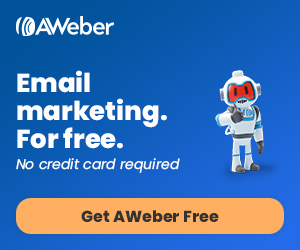Video marketing has exploded over the past few years and continues to be one of the most effective ways to engage audiences, boost brand awareness, and drive conversions. Whether you’re a small business owner, a marketer, or an influencer, video marketing can help you stand out in a crowded digital space. According to recent statistics, video content is projected to make up 82% of all internet traffic by 2024, making it a critical component of any marketing strategy.
In this blog post, we will explore the importance of video marketing, how to create successful video campaigns, and the best practices to leverage in 2024. Whether you’re just getting started or looking to optimize your existing video marketing efforts, this guide will provide you with the tools and strategies to succeed.
Why Video Marketing is Essential in 2024
The rise of social media platforms, streaming services, and high-speed internet access has made video one of the most effective ways to communicate with audiences. Here’s why video marketing is so powerful:
1. Increased Engagement
Video content is highly engaging. Viewers are more likely to watch a video through to the end compared to reading a long article or scrolling past an image. Social media algorithms, particularly on platforms like Facebook, Instagram, and TikTok, prioritize video content, making it more likely to appear in users’ feeds. Interactive and engaging videos can create emotional connections with your audience, making them more likely to share and comment on your content.
2. Improved Brand Recall
Videos are much more memorable than static images or text. According to studies, people remember 95% of a message when it’s delivered through video, compared to just 10% when reading text. This means your brand’s message is more likely to stick with your audience long after they’ve watched the video.
3. Boosts Conversions
One of the most powerful aspects of video marketing is its ability to drive conversions. Including a product video on your landing page can increase conversions by up to 80%. Video can also build trust with potential customers, demonstrate how products work, and provide social proof—key factors that influence purchasing decisions.
4. Search Engine Optimization (SEO) Benefits
Video content can improve your search engine rankings. Platforms like Google often rank pages with video content higher in search results, especially if the video is optimized with relevant keywords and descriptions. Additionally, videos hosted on platforms like YouTube, the second largest search engine globally, can drive organic traffic to your website.
Types of Video Content You Can Use
When it comes to video marketing, there’s no one-size-fits-all approach. Depending on your goals and audience, you can choose from a wide range of video types. Here are some of the most popular formats:
1. Explainer Videos
Explainer videos are short videos that explain what your business or product does. They are a great way to introduce a complex concept or product in an easy-to-understand format. Explainer videos often use animation or motion graphics to make the information more digestible and engaging.
2. Product Demos
A product demonstration video allows potential customers to see how your product works in action. These videos build trust by showing exactly what your product does, highlighting its features, and demonstrating its value. They are particularly effective for eCommerce businesses or tech products.
3. Customer Testimonials
Customer testimonial videos showcase real people talking about their positive experiences with your product or service. These videos provide social proof, which can help build credibility and trust with potential customers. Authenticity is key when creating testimonial videos—real, unscripted stories tend to resonate better with audiences.
4. Behind-the-Scenes Videos
Behind-the-scenes content gives your audience a peek into the inner workings of your business. Whether it’s how products are made, a glimpse into your company culture, or how your team collaborates, behind-the-scenes videos help humanize your brand and build a personal connection with your audience.
5. Live Streaming
Live video streaming is a real-time interaction with your audience that allows you to engage directly with viewers, answer questions, and showcase your products or services. Platforms like Facebook, Instagram, and YouTube offer live streaming features that can drive interaction and encourage immediate responses from your audience.
6. How-to Tutorials
Educational videos are highly valuable, and how-to videos are among the most watched on the internet. If your product or service requires some explanation or training, creating tutorial videos can add value for your audience while positioning your brand as an authority in your industry.
7. Brand Storytelling
Storytelling videos allow you to share your brand’s narrative, mission, and values. These videos evoke emotion and create a sense of connection with your audience. A well-crafted brand story can help differentiate your company from competitors and foster loyalty.
How to Create Successful Video Marketing Campaigns
Creating a successful video marketing campaign involves more than just shooting a video and posting it online. It requires planning, strategy, and optimization. Here are the key steps to ensure your video marketing efforts yield results:
1. Set Clear Goals
Before you create any video content, define your goals. What do you want to achieve with your videos? Are you aiming to increase brand awareness, generate leads, or boost sales? Having clear objectives will guide your content creation process and ensure that your videos align with your marketing strategy.
2. Know Your Audience
Understanding your audience is essential when creating video content. Who are they? What are their pain points? What type of content do they prefer? Tailoring your videos to meet the needs and preferences of your target audience will increase engagement and drive better results.
3. Keep It Short and Sweet
Attention spans are short, so it’s important to keep your videos concise and to the point. Aim for videos that are between 30 seconds and 2 minutes long, depending on the platform. Social media platforms like Instagram and TikTok are particularly conducive to short-form content, while longer-form content can work well on YouTube and your website.
4. Optimize for Mobile
With the rise of smartphones, more and more people are watching videos on mobile devices. Ensure that your videos are optimized for mobile viewing by keeping text readable, using a mobile-friendly format, and testing the video across multiple devices.
5. Use Engaging Thumbnails and Titles
The thumbnail and title are the first things viewers see when browsing for content, so make them compelling. Your thumbnail should be visually appealing and relevant to the content, while the title should be clear, concise, and attention-grabbing. A good thumbnail and title can significantly increase your video’s click-through rate.
6. Add a Call-to-Action (CTA)
Every video should have a clear call-to-action (CTA). Whether you want viewers to visit your website, sign up for a newsletter, or buy a product, your CTA should be direct and actionable. Including a CTA in your video or description ensures that viewers know what to do next after watching.
7. Measure and Analyze Performance
Once your video is live, monitor its performance. Platforms like YouTube, Facebook, and Instagram provide analytics tools to track engagement, views, and conversions. Analyzing these metrics allows you to understand what’s working and what’s not, helping you optimize future videos.
Best Practices for Video Marketing in 2024
As we move further into 2024, the video marketing landscape continues to evolve. Here are some key trends and best practices to keep in mind:
1. Embrace User-Generated Content (UGC)
User-generated content is a powerful tool for building community and trust. Encourage your customers to create content showcasing your products, and share it on your social media platforms. UGC helps promote authenticity and resonates well with potential customers.
2. Incorporate Interactive Videos
Interactive videos allow viewers to engage directly with the content, such as by choosing what happens next or answering polls. This type of content increases engagement and offers a more immersive experience.
3. Leverage Short-Form Content
With platforms like TikTok, Instagram Reels, and YouTube Shorts gaining popularity, short-form videos are more important than ever. These videos are quick to produce and can deliver high engagement rates, making them a great option for businesses looking to make a big impact in a short amount of time.
4. Personalization is Key
Personalized video content that speaks directly to your audience can be highly effective. From tailored video ads to personalized email campaigns, using customer data to create relevant videos can improve engagement and conversion rates.
Conclusion
Video marketing is no longer optional; it’s a necessity for any brand looking to thrive in the digital age. By creating engaging, valuable, and targeted video content, you can capture the attention of your audience, drive conversions, and boost brand loyalty. Whether you’re using explainer videos, product demos, or customer testimonials, the key is to deliver content that resonates with your viewers and aligns with your marketing objectives. As the video landscape continues to evolve, stay on top of trends and continually refine your video marketing strategy to stay ahead of the competition in 2024. This site may contain links to affiliate websites, and we receive an affiliate commission for any purchases made by you on the affiliate website using such links. Check Out Master Affiliate Profits Here: https://fredsmarketing.com/map



